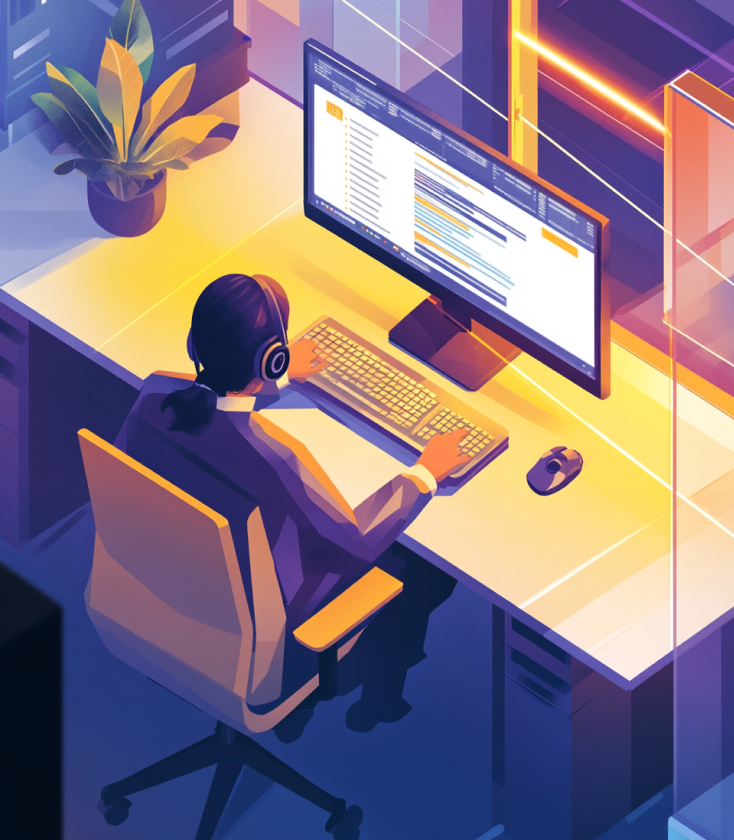Call Attestation: When Your Business Calls Need an ID Check
Phone calls used to be simple. You dial, they answer, conversation ensues. Not anymore. Welcome to the excessively complicated world of call attestation, where your business calls now need to flash their digital ID before anyone will pick up. If you’ve noticed more of your outbound calls being ignored or, worse yet, labeled with the dreaded “Scam Likely” badge of shame, call attestation might be the culprit behind your communication woes.
Businesses everywhere are discovering the hard truth: it doesn’t matter how legitimate your call is if the phone network thinks you’re a scammer. The days of simply punching numbers and reaching customers are gone, replaced by a complex system of verification that most business owners never asked for but now can’t afford to ignore.
What Is Call Attestation and Why Should You Care?
Call attestation is part of the STIR/SHAKEN framework (and no, it’s not named after James Bond’s drinking preferences). This system was designed to combat the plague of robocalls and spoofed calls that have made everyone suspicious of their ringing phone.
When your business places a call, the originating service provider “attests” to certain assertions about that call—specifically, who you are and whether you’re authorized to use the calling number. This attestation travels with your call as a cryptographic signature in the routing metadata, allowing the terminating carrier to verify the signature and determine how trustworthy your call appears.
Think of it as your call’s passport. A strong attestation means your call sails through customs without a second glance. A weak attestation? Your call gets the full rubber-glove treatment and might be denied entry altogether.
The real kicker? Most businesses don’t even realize this is happening until they wonder why their answer rates have plummeted faster than tech stocks in a recession.
The Three Levels of Call Attestation: A, B, and C (Not a Report Card, But Close)
Not all call attestations are created equal. There’s a hierarchy that determines whether your calls get the VIP treatment or end up in the spam dungeon.
| Attestation Level A (Full) “We know this caller and they’re authorized to use this number.” Calls display normally, highest chance of being answered
| Attestation Level B (Partial) “We know the caller but can’t fully verify their right to use this number.” | May be flagged by some carriers, moderate risk of being labeled as spam
| Attestation Level C (Gateway) “This call came from somewhere, but we have no idea who they are.” | High probability of being marked “Scam Likely” or blocked entirely
Level A attestation is the golden ticket. The provider knows who you are and confirms you’re authorized to use the number you’re calling from. Your calls display properly and have the best chance of being answered. It’s like having TSA PreCheck for your phone calls.
Level B is where things get dicey. The provider knows you’re a customer, but can’t fully verify that the number is yours. Maybe you’re using a ported number or calling through a forwarded trunk. Whatever the reason, your calls might start getting the side-eye from mobile networks.
Then there’s Level C—the telecommunications equivalent of showing up to a bar with a fake ID that has “McLovin” printed in Comic Sans font. The provider simply sees your call coming through a gateway with no verification of who you are. These calls are practically begging to be labeled as spam.
The difference between these levels isn’t academic. A study by the FCC found that approximately 79% of calls with C-level attestation were flagged as spam, compared to just 8% of calls with A-level attestation. That’s the difference between actually reaching your customers and shouting into the void.
Why Your Business Should Give a Hoot About Attestation
Imagine spending thousands on marketing to generate leads, only to have your follow-up calls blocked before they ever reach a human ear. Or picture your customer service team trying to resolve an urgent issue, but the customer never picks up because their phone screams “SCAM LIKELY” in bold red letters. That’s the reality for businesses with poor call attestation.
The consequences go beyond mere inconvenience:
- Decreased answer rates mean wasted time and resources
- Damaged brand reputation when customers see your legitimate calls labeled as scams
- Lost sales opportunities when prospects don’t pick up
- Customer service issues that escalate because voice communication fails
- Regulatory risks as FCC requirements become stricter
One particularly painful example comes from healthcare providers, whose critical appointment reminders and test results are increasingly being mislabeled as spam. Nothing says “modern healthcare” like your oncologist being sent straight to voicemail because they have C-level attestation.
Business owners didn’t sign up to become experts in telecommunications protocols, yet here we are. The worst part? Many businesses don’t even know they have an attestation problem until their communication channels have already been compromised.
The Regulatory Hammer: FCC’s Not Asking Nicely Anymore
The Federal Communications Commission isn’t just suggesting businesses pay attention to call attestation—they’re mandating it. Under the TRACED Act, voice service providers were required to implement STIR/SHAKEN in their IP networks by June 30, 2021.
But the FCC wasn’t done. Their new Call Authentication Trust Anchor (CATA) rules, which take effect September 18, 2025, impose even stricter requirements:
- Providers must hold their own STIR/SHAKEN certificates
- Providers must obtain a Service Provider Code (SPC token) if they originate calls for others
- Third-party signing is allowed, but the provider remains responsible for determining attestation levels
- Providers must maintain records showing how attestation levels are assigned
- Improper attestation can result in removal from the Robocall Mitigation Database, effectively blocking all calls nationwide
The government has essentially told the telecom industry: “Fix this robocall problem, or we’ll fix it for you.” And when government agencies offer to “fix” things, it rarely ends well for businesses caught unprepared.
How Techmode Handles This Call Attestation Circus
While other telecom providers are scrambling to understand these regulations, Techmode has been ahead of the curve on STIR/SHAKEN compliance from day one. Unlike the “figure-it-out-later” approach many providers take, Techmode built its TechmodeGO platform with call attestation as a fundamental component, not an afterthought. With our own Token, certification, and signing service, Techmode maintains complete control over the attestation process—meaning your calls don’t rely on third-party validation that could compromise delivery. This matters because when you own the authentication chain, you can ensure consistent A-level attestation without the complications that arise from outsourced compliance.
Techmode delivers A-level attestation for legitimate business calls by:
- Maintaining strict verification of customer identity and number ownership
- Implementing a robust robocall mitigation plan that exceeds FCC requirements
- Providing dedicated U.S.-based support that understands the nuances of call authentication
This isn’t just technical compliance—it’s about ensuring your business communications actually reach their intended recipients. Techmode’s 99.999% uptime guarantee and A+ BBB rating don’t mean much if your calls are being flagged as spam. That’s why their approach focuses on all aspects of call delivery, including proper attestation.
The results speak for themselves: Techmode maintains an NPS score of 85, far exceeding the industry average of 35. Maybe that’s because their customers’ calls actually get answered.
The Bottom Line: Attestation Matters
Call attestation isn’t going away. In fact, it’s becoming more stringent as regulators crack down on robocalls and spoofing. Businesses that ignore this reality will find themselves increasingly isolated from voice communication channels.
The choice is simple: either understand and adapt to these new requirements, or watch your business communications gradually fade into the spam folder of telecommunications. And while the technical details may seem daunting, working with a provider that specializes in proper attestation—like Techmode—means you can focus on running your business instead of becoming an expert in STIR/SHAKEN protocols.
After all, your business calls should be about connecting with customers, not fighting the telecom system just to be heard.
FAQ: Call Attestation Questions Answered
Q: Can my business improve its attestation level without changing providers?
A: Possibly, but it depends on your current provider’s capabilities. Many providers lack the infrastructure to offer A-level attestation regardless of what you do on your end. It’s like asking a flip phone to run Instagram—some technology gaps can’t be bridged.
Q: How do I know what attestation level my calls currently have?
A: Ask your current provider directly. If they respond with “What’s attestation?” it might be time to find a new provider who wasn’t born yesterday.
Q: Does call attestation affect toll-free numbers?
A: Yes, even toll-free numbers require proper attestation. Being toll-free doesn’t grant you immunity from the rules, just like how being rich doesn’t exempt you from traffic laws (well, in theory).
Q: Will these attestation requirements become less strict over time?
A: That’s about as likely as spam emails disappearing. The FCC continues to strengthen requirements, not relax them. Adaptation is your only viable strategy.
Q: How quickly can Techmode help fix our attestation issues?
A: Techmode’s white-glove implementation process typically takes 30-45 days from start to finish, including number porting and establishing proper attestation levels. Unlike other providers who treat attestation as an afterthought, Techmode builds it into the onboarding process from day one.
Don’t let call attestation become the reason your business voice gets lost in the noise. With proper implementation and a knowledgeable provider like Techmode, your calls can get back to doing what they’re supposed to do—connecting you with the people who matter to your business.










